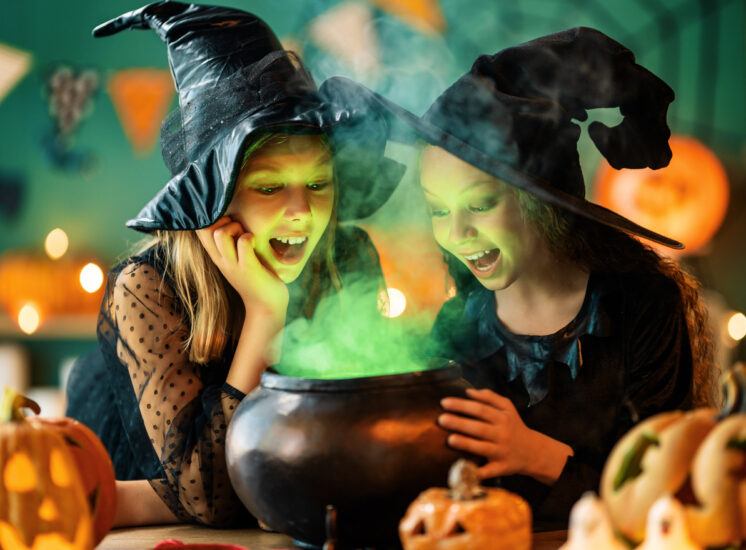As Halloween approaches, it’s the perfect time to bring a little spookiness into learning. Using eerie themes to teach science and maths can boost engagement and make even tricky concepts more memorable. A touch of mystery encourages students to ask questions and explore ideas in creative ways.
The playful atmosphere also helps reduce anxiety around learning, allowing students to experiment and make mistakes without fear. By blending fun with education, teachers and parents can transform ordinary lessons into captivating experiences that inspire wonder long after the Halloween decorations come down.
Here are some fun ways to embrace the spooky season.
- Potion Lab Experiments
Turn your kitchen into a mini potion workshop! Gather everyday items like vinegar, bicarb soda, and food colouring. Let your child measure, pour, and mix ingredients, observing the fizzing reactions and talking about cause and effect. This playful activity introduces chemistry concepts like acids and bases, while reinforcing measuring skills. Encourage predictions before each experiment and discuss what changed. It’s messy, fun, and a magical way to show that science is full of surprises.
- Pumpkin Maths Challenge
Grab a pumpkin and explore maths together. Estimate its weight, height, and circumference before measuring to check your guesses. Count the seeds inside, sort them into groups, and talk about multiplication or division. You can even graph the results! This hands-on activity makes numbers tangible, helping children see maths as something real and exciting. Plus, it’s a great way to combine seasonal fun with meaningful learning, and perhaps make pumpkin soup afterwards!
- Spider Web Geometry
Draw, weave, or build spider webs using string, chalk, or sticks. Talk about shapes, angles, and symmetry, and how each strand connects to create strength and balance. This is a perfect way to link art and maths, while encouraging fine motor skills and patience. As your child designs their web, discuss patterns in nature and how geometry helps spiders build efficient traps. It’s a creative, hands-on way to make abstract ideas visible and memorable.
- Shadow Science
On a sunny afternoon or with a torch indoors, explore how shadows form and move. Have your child trace their shadow, then observe how it changes through the day or as they move the light source. Talk about how light travels in straight lines and why shadows stretch or shrink. This simple, eerie experiment introduces core physics ideas through observation and play, helping children understand light, angles, and time without any complicated equipment.
- Monster Measurements
Make the learning hands-on by creating “monster footprints” from cardboard or playdough. Measure their length, width, and stride using rulers or tape measures. Compare monster sizes, calculate areas, or estimate how far each could step. This silly, imaginative activity teaches practical maths skills, measurement, comparison, and estimation, while keeping things light-hearted. It’s especially fun for kids who enjoy storytelling, turning a maths exercise into a mini adventure full of giggles and discovery.
How Tutor Doctor Effectively Teaches Science and Maths Concepts
At Tutor Doctor, we make maths and science come alive by connecting concepts to real-world experiences. Our tutors tailor each session to the student’s learning style, helping them build confidence as well as understanding.
We focus on curiosity-driven learning, exploring the “why” behind every formula or experiment. Whether it’s tackling tricky equations or discovering the wonder of chemistry, our personalised approach turns frustration into fascination, empowering students to see themselves as capable, curious problem-solvers.
Contact us for a free consultation.




